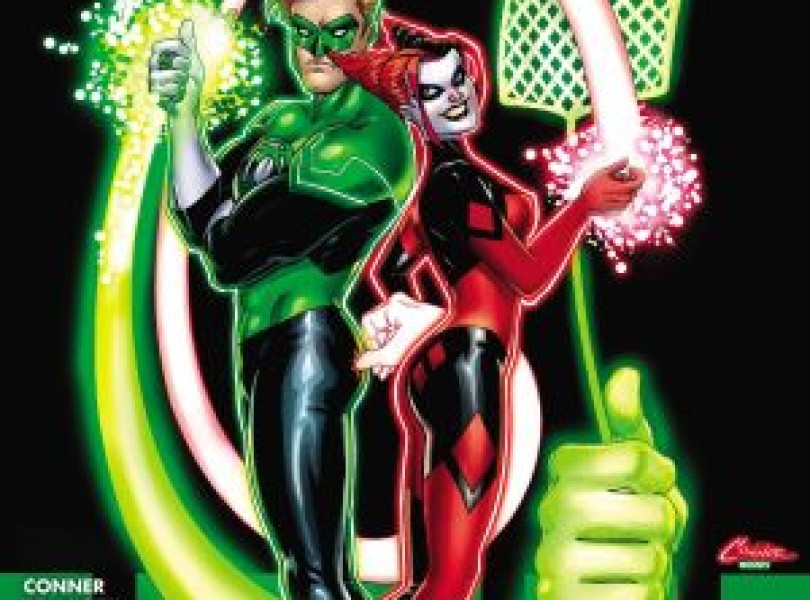Harley becomes a ring-slinger.
Harley Quinn is checking off bucket list items left and right thanks to this new series. Fresh off her all-too brief team-up with Wonder Woman in issue #1, issue #2 pairs Harley with Hal Jordan. The dynamic between Hal and Harley is fun to read, but there’s still a nagging sense that this series isn’t doing enough to live up to its potential.
The conflict i this issue arises as a complete set of stolen Lantern Corps rings makes its way to Earth and Harley finds herself inducted into both the Red Lanterns and Black Lanterns at once. Now empowered with cosmic might and even less inhibited than usual, Harley carves a new path of destruction across the planet that puts her square in Hal Jordan’s sights. It’s a great premise, and there’s no small amount of appealing seeing Harley cut loose and do battle with Hal. Sometimes it’s fun to see a more evil (or at least aggressively mischievous) side of Harley. And while there’s plenty of friction between the two characters, there’s also a flirtatious bond that develops once Harley’s mind reverts to what passes for normal.

But just as the first issue wasted a terrific opportunity in terms of exploring Wonder Woman’s impact on Harley’s life, this issue fails to explore her psychology. There doesn’t seem to be any thought given to why the red and black rings chose her (beyond the obvious color coordination) or how they reflect her personality. Why are rage and death better fits for Harley than love or fear or will? It’s reflective of a weird trend with Lantern-themed crossovers lately, where it seems like any character can wield any ring as long as the story demands it.
This issue is at least more visually consistent than the first. John Timms handles most of the pages himself this time, and his angular, expressive style stands out far more when it isn’t being rudely juxtaposed with Amanda Conner’s art. Timms gives the conflict a scale appropriate to a battle between two hot-headed ring-slingers. A few pages are drawn by Mauritat instead, but the good news is that Mauritat is able to mimic Timms’ style closely enough that the shift is barely noticeable.
If you crave a little more direct interaction between Harley Quinn and the rest of the DCU, this new series fits the bill. It retains the light tone and charm of the main series while dragging various DC icons in for silly team-ups. Unfortunately, this is the second time in a row the series has ignored the opportunity to explore Harley’s fragile psyche in greater depth. That sets a bad precedent going forward.



